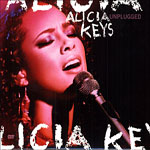This review page is supported in part by the sponsors whose ad banners are displayed below |
 |
 |
This was no real miracle. The first generation of USB-connected audio devices generally offered disappointing performance and Audio-GD’s DSP-1 is not a 100% effective remedy for jitter. To improve its USB performance, the Reference 5 DAC in my opinion needs a supporting interface of Trends UD-10.1 or Halide Design Bridge caliber. The cost of such an association would be quite comparable to the recently reviewed Wyred4Sound asynchronous DAC2.
|
Listening to electric instruments, the Reference 5 DAC delivered a quiet but solid result. There was no particular harshness which often occurs with very compressed recordings. The Reference 5 seemed to keep control of the musical message under even adverse circumstances. On the Chick Corea Elektric Band’s Inside Out, even Franck Gambale’s guitar refused to descend into chaos and remained perfectly intelligible. The great solo in "The tale of Daring part III" was particularly impressive with a density and cleanliness that felt close to the original sound of an electric guitar free from additional distortion.
|
|
|
This album is really a complex framework of atonal and chromatic passages. It is generally difficult to raise the volume to realistic levels due to the overall confusion and sonic compression. The ability of the Reference 5 DAC to separate out each instrument and operate against such great silent simply didn’t miss a beat.
|

|
In the same manner Karen Young’s first album for the Ursh record company had its colorful electric climate reproduced fairly with energy and great control. With acoustic instruments and voices, the Audio-GD succeeded at reproducing sufficient detail to trigger palpable emotions. On Ballaké Sissoko & Vincent Segal Chamber Music album, the sound of the African Kora was quite realistic. I spent some time in Africa’s Republic of Guinea more than twenty years ago and learned to play the Kora with very skilled Guinean players. Hence my intimacy with the sound and timbre of this instrument. In Guinea you hear the Kora every day. It's an essential component of everyday life. Turning to the Audio-GD component, I found the right tonal balance which for the kora isn’t as bright and crystalline as a harp but requires sufficient harmonic depth.
|
|
|
|
 |
On Alicia Keys' MTV Unplugged live album, "Wild Horses" showed fair separation of her and Adam in the chorus lines. The drums remained constantly audible along the track and Adam Levine's guitar was realistically timbred without any particular emphasis on attacks or harmonics. I had just one doubt related to Levine's voice. With the Yamamoto, Levine returned to a more juvenile voice with less alcohol & drug-induced ravages while the slight dark nature of the Chinese machine made him sound a bit older. On the other hand the silent background of the Audio-GD brought a very appreciable coalescence of his guitar free from any metallic grunge.
|
|
Listening to 2L's production of the Grieg Piano concerto, the Reference 5's superb silence allowed me to hear all the small background noises of the orchestra. While the differences of timbres between all the instruments were not so obvious as over the Yamamoto, the Yammy on classical music is typically a rare ray of sunshine. I have heard few devices as capable of illuminating this genre in its price range (which is already thrice that of the Audio-GD). In terms of soundstage and image stability, the Audio-GD's performance was nevertheless of the first order.
Conclusion: Summing up, the Audio-GD Reference 5 is worth the money. If you already have in your balanced system a source or amplification device with a somewhat generous treble balance, it could be a perfect match. Having used the Reference 5 for more than two months, I became very appreciative of its merits.
|
|
|
The PCM1704 offered an impressive level of operational silence and a very relaxed sound with all the dynamics my vivid listening preferences demand. Considering price, this machine represents in my opinion an interesting upgrade for CD players between $1.000 and $3.000 specifically for balanced systems. It should first and foremost bring significant improvements in soundstaging and resolution over an integrated CD player.
|
|
|
Regarding its USB input, the TE7022 transceiver no longer is the best option and I strongly recommend to invest in a more efficient USB interface to get the best from your Reference 5 DAC. The little Trends UD-10.1 did a superior job for little money. I had great results using its Toslink input and S/PDIF out. Obviously for those focused exclusively upon computer sources, more recent asynchronous USB DACs will be even more interesting. Here the Reference 5 remains a sophisticated product based on legacy technologies. Even though the "jitter killer" DSP1 delivered different results with different preceding drives to put into question its ultimate effectiveness, my overall impression over two months was nevertheless of a very clean and smooth reproduction of any musical genre. In this regard, I can easily declare the Audio-GD Reference 5 to be a very competitive option in its affordable price range. |
|
|
Quality of packing: Good.
Reusability of packing: A few times.
Ease of unpacking/repacking: Effective.
Condition of component received: Flawless.
Human interactions: Responsive.
Pricing: Good value for money.
Final comments & suggestions: Universal products are quite rare and the Reference 5 has its own darker flavor. Do not hesitate to consult Audio-GD to get a more precise idea about the best solution for your personal system – their converter catalogue is prolific.
|
 |
 |
|
 |